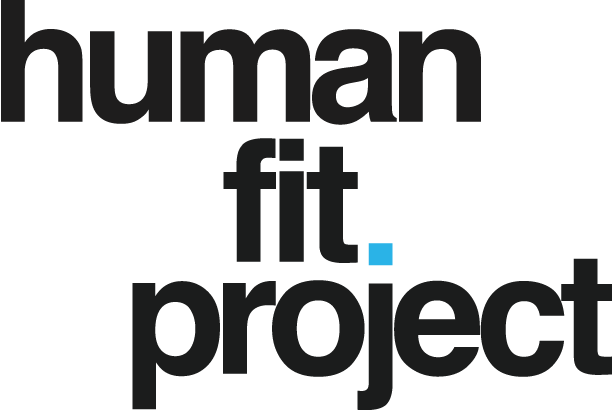As we age, especially over-50, it’s crucial to maintain an active lifestyle and prioritize our health. Our Over-40 workout plan has proven to be a great success, and now we’re introducing a new workout plan specifically tailored for individuals aged 50 and above. This plan takes into account the unique challenges and goals of staying fit after 50 while providing a comprehensive and enjoyable workout routine.
Related: Age-defying strategies to keep you feeling young and vibrant
Benefits of Exercise After 50
As we journey through our 50s and beyond, the role of exercise becomes more crucial than ever. Engaging in regular physical activity helps maintain a robust cardiovascular system, essential for heart health and reducing the risk of high blood pressure and chronic illnesses. Furthermore, exercise plays a pivotal role in preserving muscle mass, which tends to diminish with age. Consistent workouts help in building and maintaining lean muscle, contributing to a higher metabolism and aiding in weight loss. Mobility exercises also become increasingly important, helping to maintain flexibility, reduce joint stiffness, and improve overall range of motion, making daily activities more manageable and enjoyable.
What Over-50 People Need to Know
When working out at this age, it’s essential to consider the following factors:
Continued Focus on Heart Health
Maintaining heart health becomes increasingly critical as we age. Regular cardiovascular exercises are key to keeping the heart strong and efficient. Engaging in lighter intensity workouts like brisk walking, swimming, or cycling can be highly beneficial. These activities elevate the heart rate to a safe level, improving cardiovascular health without putting excessive strain on the joints.
Additionally, moderate-intensity exercises such as steady-state cardio on a stationary bike or a leisurely hike offer enjoyable ways to enhance heart health. Including these activities in a weekly workout plan ensures a comprehensive approach to maintaining a healthy heart, which is essential for overall well-being and longevity.
Continued Focus on Mobility and Flexibility
As we get older, maintaining mobility and flexibility becomes vital to our overall quality of life. Regular stretching and mobility exercises help keep the muscles supple and the joints fluid. Practices such as yoga or Pilates are excellent for enhancing flexibility, balance, and body awareness. Incorporating dynamic stretches before workouts and static stretches afterward can significantly improve flexibility and reduce the risk of injuries.
Mobility exercises targeting major joints like the hips, shoulders, and knees also aid in performing daily activities with ease and comfort. A routine that includes a variety of stretches and mobility drills can lead to improved posture, reduced muscle tension, and an overall sense of physical freedom.
Continued Focus on Strength Training
Strength training, specifically, weight training is crucial for preserving muscle mass and combating the natural muscle loss that occurs with aging. Functional strength exercises that mimic everyday movements can be particularly beneficial. Utilizing lighter weights with higher repetitions helps in maintaining muscle tone and strength without putting undue pressure on the joints. Exercises such as seated shoulder presses, leg presses, and resistance band workouts are excellent for building strength.
Incorporating full body workouts, where you’re lifting weights that engage multiple muscle groups can also help in maintaining functional fitness and independence. Regular strength training or weight training not only aids in muscle preservation but also boosts metabolism, contributing to better weight management, weight loss, and overall health.
Continued Focus on Joint Health
Joint health is paramount for maintaining an active lifestyle post-50. Modifying exercises to minimize stress on the joints can significantly reduce the risk of injury and discomfort. Low-impact exercises such as swimming, elliptical training, or using a rowing machine provide excellent cardiovascular benefits without the harsh impact on joints that high-impact activities may cause.
Additionally, incorporating exercises that strengthen the muscles around the joints can help in providing better support and reducing joint strain. Activities like water aerobics or Pilates, which focus on gentle movements and core strength, can be especially beneficial for joint health.
Increased Focus on Recovery
As the body ages, the importance of recovery in any exercise regimen becomes more pronounced. Scheduling regular rest days allows the body to repair and strengthen itself. Adequate sleep and proper nutrition play a crucial role in this process. Sleep provides the body with the opportunity to regenerate, while a balanced diet rich in proteins, healthy fats, and carbohydrates aids in muscle repair and replenishment of energy stores.
Active recovery methods, such as light walking or gentle yoga, can also be beneficial. They keep the body moving without the intensity of regular workouts, promoting blood circulation and aiding in muscle recovery. Listening to the body’s signals and allowing enough time for rest and recovery is essential for sustaining a long-term exercise routine effectively.
Aging Shouldn’t Mean Slowing Down
There’s no denying that life after 50 presents its own unique challenges, but it’s also an incredible opportunity to redefine your priorities and make your health and well-being a top focus. Embracing a consistent exercise routine can be the catalyst for not only maintaining your current level of fitness but also discovering newfound strength, energy, and resilience.
By doubling down on exercise, you’re investing in yourself and taking control of the aging process. You’re sending a powerful message that you value your health and are committed to living your best life, regardless of your age. Together, we’ll show the world that age is just a number, and it’s never too late to build a stronger, fitter, and more vibrant version of yourself.
Don’t forget to follow us on Twitter, Instagram, and Facebook.
Key Components of the Plan
This workout plan is carefully designed to cater to the unique needs of those over 50. It incorporates a blend of strength training, to combat age-related muscle loss and maintain muscle mass, and balance exercises, vital for preventing falls and improving coordination. The plan also includes moderate-intensity cardiovascular exercises, perfect for weight loss and fat loss, while also maintaining heart health without overstraining the body. These components come together to create a holistic exercise routine that addresses the key areas of fitness necessary for aging gracefully.
Details of the Workouts
Each workout routine in this plan has been chosen for its effectiveness in addressing the specific needs of the over-50 age group. For example, the inclusion of shoulder presses and bench presses helps in strengthening the upper body, vital for everyday activities. Lower body workouts with exercises like squats and step-ups focus on building leg strength and stability. The choice of lighter weights and higher repetitions minimizes joint stress while still promoting muscle growth, endurance, and general weight loss.
A Balanced Training Approach
Targeting various muscle groups is essential for a balanced workout regimen. Compound exercises, which work multiple muscle groups simultaneously, are highly effective for this age group. These include exercises like squats, which engage the lower body, and bench presses for the upper body. Weight training is a key component, helping to build muscle, burn fat, and maintain overall strength. Additionally, bodyweight movements provide a safe way to build muscle without additional equipment.
The Weekly Workout Plan
This weekly workout schedule includes:
Monday – Strength Training – Muscle Building – Upper Body
Seated row or Dumbbell row: 3 sets of 12 reps
Modified push-up (knees on the ground): 3 sets to failure
Standing resistance band curl: 3 sets of 12 reps
Seated dumbbell shoulder press: 3 sets of 12 reps
Resistance band lateral raise: 3 sets of 12 reps
Tricep kickbacks with dumbbells: 3 sets of 12 reps
Rest 30-60 seconds between sets.
Tuesday – Mobility/Flexibility
Shoulder rolls: 2 sets of 10 reps (forward and backward)
Seated hamstring stretch: 2 sets of 30-second holds per leg
Hip openers (butterfly stretch): 2 sets of 30-second holds
Minimal rest between sets.
Wednesday – Low-Impact Cardio
Choose one of the following activities:
Brisk walking: 45-60 minutes
Swimming: 45-60 minutes
Cycling: 45-60 minutes
Thursday – Strength Training – Muscle Building – Lower Body
Bodyweight squat: 3 sets of 15 reps
Step-ups: 3 sets of 12 reps per leg
Seated leg press: 3 sets of 12 reps
Standing calf raise: 3 sets of 15 reps
Seated leg curl: 3 sets of 12 reps
Rest 30-60 seconds between sets.
Friday – Mobility/Flexibility
Seated forward bend: 2 sets of 30-second holds
Calf stretch: 2 sets of 30-second holds per leg
Gentle spinal twist: 2 sets of 30-second holds per side
Minimal rest between sets.
Saturday – Mind-Body Day
Choose a 45-60 minute yoga or Pilates class, focusing on:
Balance
Flexibility
Mindfulness
Sunday – Off
Take this day completely off to allow for full recovery.
Tailoring Your Workout: Progression and Adaptation
Personalization of the workout plan is key to meeting individual fitness goals and accommodating any physical limitations. As fitness levels improve, it’s important to adjust the intensity, resistance, and duration of exercises. Consulting with a trainer or coach can be beneficial, especially for beginners or those with specific health concerns, to ensure exercises are performed with proper form and to maximize effectiveness while minimizing the risk of injury.
Overcoming Challenges & Staying Motivated
Staying motivated can be challenging, especially when dealing with age-related issues like chronic illnesses or joint discomfort. It’s important to listen to your body’s signals and adapt the workout routine as needed. Developing balance and incorporating light weights can help in building strength without overexertion. Regular exercise can also play a significant role in managing and improving chronic conditions, leading to an overall enhanced quality of life.
Got questions? Ask Mike on Twitter, Instagram, and Facebook.



